 |
A 'Prospector'
railcar awaits its departure from East Perth Terminal in Western Australia,
bound for Kalgoorlie.
Due to gauge
difference, all standard gauge passenger train can only arrived and
depart from East Perth Terminal, instead of Perth central station, as
the later only have 1067mm rails. In this photo, the rail under the
wire is 1067mm, whereas the rest are1435mm.
|
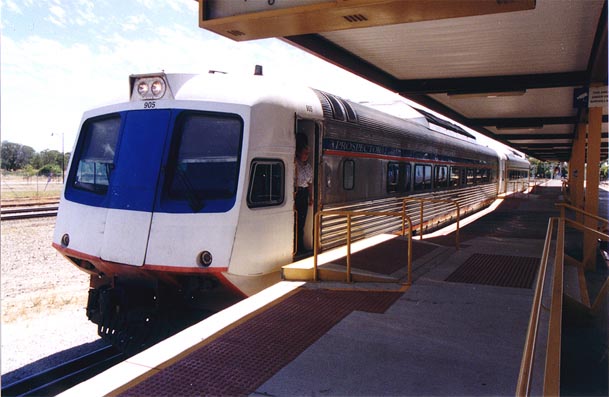 |
A 'Prospector' railcar
ready to depart from Midland Station.
For keen viewers, this
railcar design is based on the famous 'Budd Railcar'. Unless, they replaced
the cab with streamlined one, and using 'MAN' engine (later replaced by
Cummins), instead of GM.
In fact, there are
several railcars in Australia who had similar design with Budd railcar,
as the actual Budd railcar was once used in Australia. This 'Prospector'
railcar will be retired in 2003, as the new railcar will replace them.
|
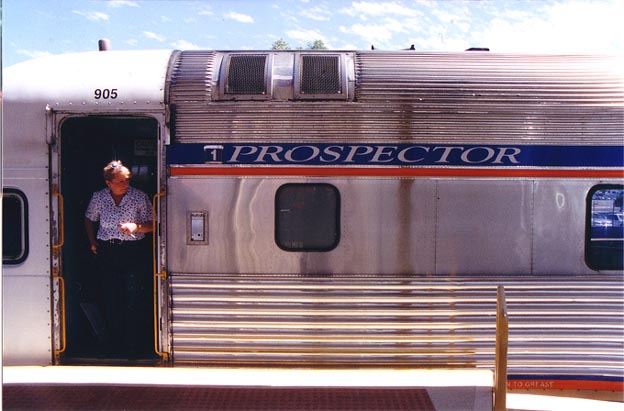 |
A stewardess awaits
her passengers, bound for Kalgoorlie.
Or is she waiting for
the brand new 'Prospector' railcar? Her railcar is nearly 30 years old!
And it's already looked aging!
|
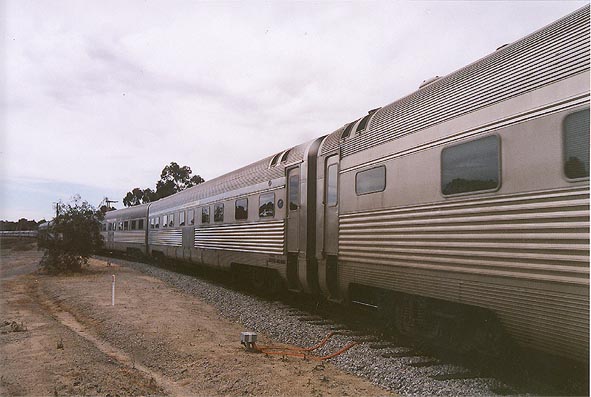 |
'Indian Pacific' trains
passing through Midland station. The train didn't stop there as it is
too long for Midland's platform. This picture show you why, even the carriages
in the background is part of the same train!
Note: the land in front
of this picture was once the standard gauge platform of Midland Station.
It was demolished when the standard gauge rail was realigned and incorporated
to the line on the main station building.
|
 |
The Wegmann built carriages
was used for Indian Pacific's predecessor: The Trans Australian. It was
introduced in early 1950s. Although it was later used for Indian Pacific
too, until 1980s.
The carriages was built
in Germany, but the finishing touch was done in Australia. Although they
already retired, it doesn't mean they no longer in use. Some of them are
still used for crew car on freight train. And some other were used for
tourist train (like the one in the picture). A few of them ended up in
museum, and hardly any in scrapyard.
|
|
|
A dual gauge point
near Midland station. The reason behind the using of three rails, is to
allow both 1067mm and 1435mm trains to use the line. As the West Australian's
official size is 1067mm (but they have a large number of standard gauge
rolling stock fleet), whereas the Australia's standard gauge is 1435mm.
For Indonesian rail
buffs, the railway line between Surakarta and Yogyakarta was once similar
with this. It was standardized to 1067mm by Japanese Imperial Government
during Second World War.
|
|
|
This is what was left
of the once-famous dual gauge line between Surakarta and Yogyakarta. Note
the holes beside the rail on the left, used to bolt the standard gauge
rails.
During the Japanese
occupation in WWII, the outer third rail was removed, but the sleeper
was retained until late 1990s, when the rails between Surakarta and Yogyakarta
was replaced with the new heavier rails, and the dual gauge sleeper was
replaced by concrete sleeper.
|
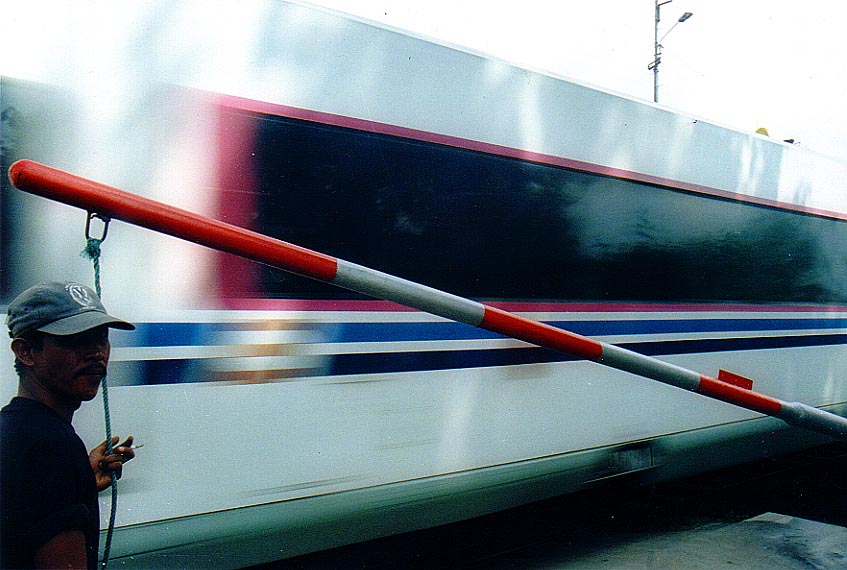 |
This gate keeper had
never been a famous figure in Indonesian railway industry.
But he, and a lot of
other gate keeper, had played an important role of securing the railway
line from wandering pedestrian, so the train (like this Argo Bromo Anggrek)
can pass through without problem.
So, this photo is a
tribute to those unsung heroes of Indonesian Railway World.
|
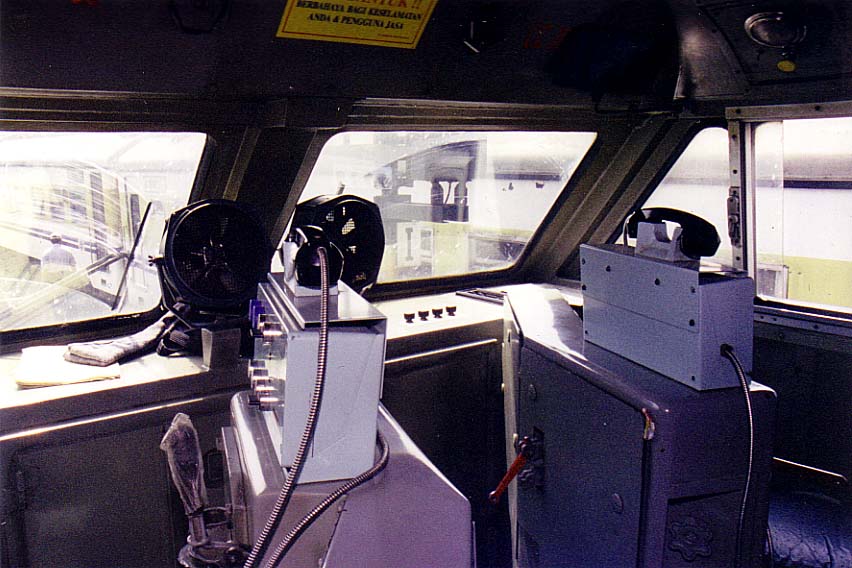 |
A view of CC203 locomotive.
This CC203 loco (number
38) came from the last production batch, and only three years old when
this photo was taken.
Even the horn handle
on B-side console (left) is still covered with plastic.
|
 |
Closer view of the
A-side driving console.
The red handle is used
to control the train brake, whereas the blue handle in the middle is for
the dynamic brake. The throttle is the blue handle beneath the dynamic
brake. The speedometer of this loco is still functional, as most CC203
no longer have its speedometer functioning.
A diesel railcar is
visible in the background.
|
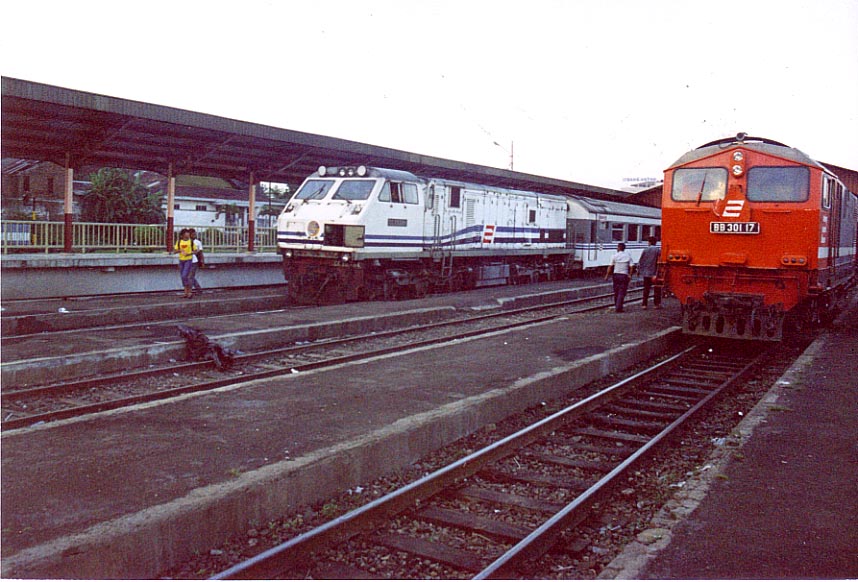 |
CC20304 (left) prepare
for late afternoon departure to Jakarta, whereas a BB301 have just arrived
back after working on a local train from Cianjur.
What makes this photo
special is that the equipment door on CC203's nose was left open while
its driver failed to notice it. It was later closed when the co-driver
arrived.
|
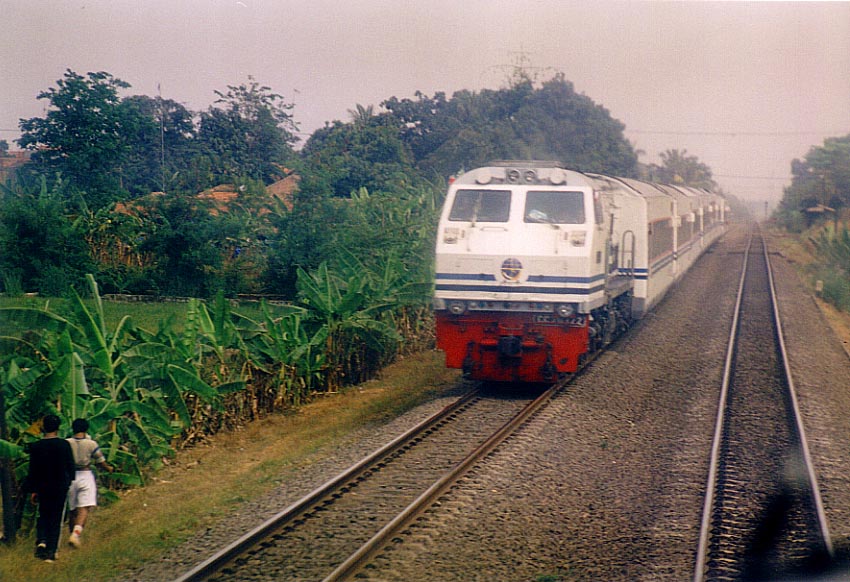 |
My train passed the
Argo Bromo Anggrek train bound for Surabaya.
This train is currently
the fastest train in Indonesia, yet it went through the unprotected line
where tresspasser could enter the railway premises easily.
|
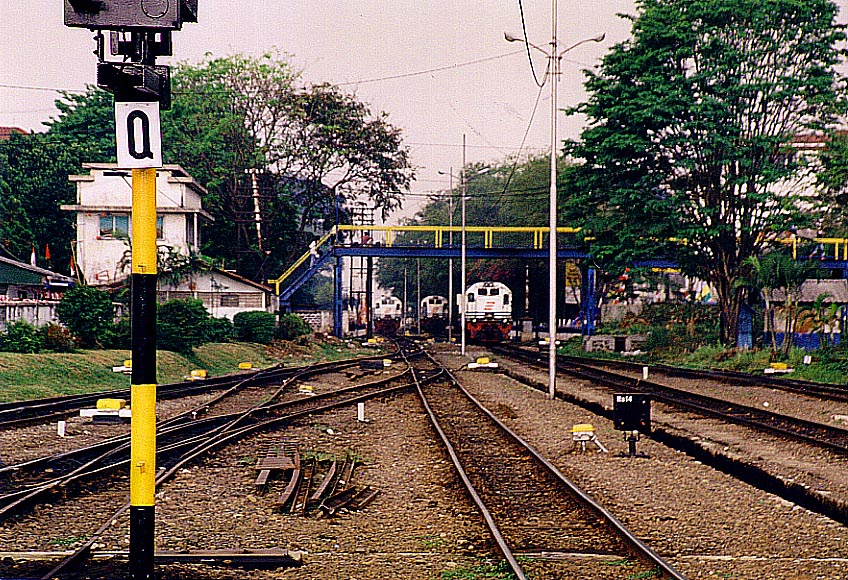 |
You could hardly find
a situation where several locomotives queueing just to enter the depo!
But it did happen in
one holliday eve in Bandung, when a surge in traffic activity led to excessive
rail traffic density
|
|
|
Hidden deep inside
the John Forrest National park, is the remain of Western Australia's only
railway tunnel.
Prior to Second World
War, going through this tunnel was the only mean of getting in and out
from Perth to East Coast.
But after an accident
in Second World War, an alignment was built around the hill, and the tunnel
were used by the descending train only.
|
|
|
A closer look at the
tunne'sl facade.
When the building of
standard gauge/1435mm railway line was commenced in 1960s, it was decided
to built an entirely new route to the North of John Forrest National Park,
which bypassed this route completely, as this route was too steep and
circuitous, and the tunnel was too small to accomodate the new standard
gauge rolling stock.
This railway line itself
was closed in 1960s, and the rails were lifted soon after. And nowaday,
there's very little remains of the old railway line in the site. And the
object (probably used for signalling purpose) at the bottom left of the
picture is the only sign that there used to be a railway line in this
place.
|
|
|
The interior view of
'Argo Bromo Anggrek' of Indonesian State Railway.
This train is the fastest
and the most luxurious train in Indonesia. But, judging by leather seat's
state, the train seems to had a better days...
Oh, the person who
wore blue shirt and carrying the suitcase is my sister. She went to Jakarta
for an assignment.
These leather seats
are no longer exist, as they have been replaced by fabrics.
|
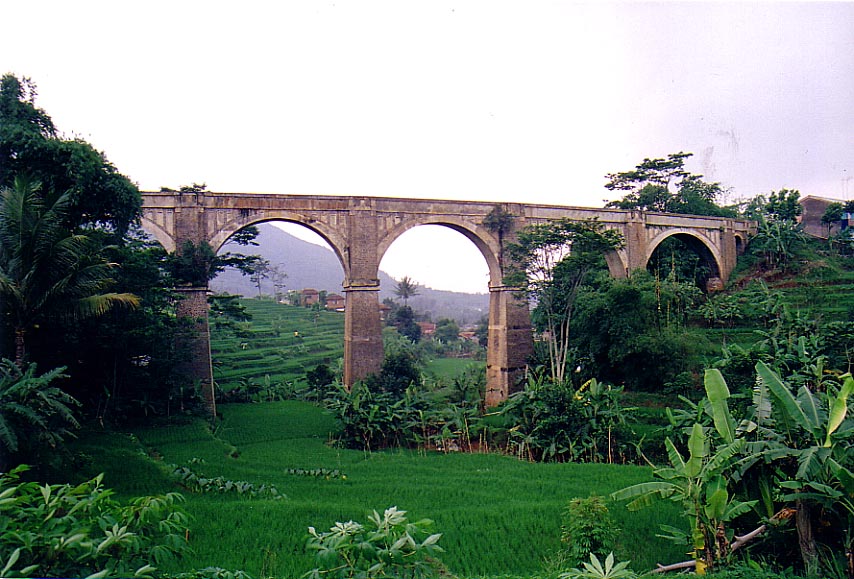 |
This massive stone-arch
bridge is the Cikuda bridge, which is located near the town of Jatinangor.
Perhaps, the most beautiful
stone bridge the Dutch ever built in Indonesia, this bridge was once a
part of the Rancaekek-Jatinangor branch, which had unfortunately been
pulled up by Japanese Imperial Army during Second World War. And the line
is among the dismantled railway lines in Indonesia which had never been
relaid after Indonesia's independence in 1945.
|
 |
Top view of the bridge,
with the author sitting on the left. Although narrow, this bridge once
accomodated a 1067mm railway line to Jatinangor.
There were some rumours
that the Dutch Colonial government did actually want to extend this line
all the way to Sumedang (the only large town in West Java which have never
been connected by railway line). But that plan never materialized. And
since the independent Indonesian government never bothered the national
railway system, as much as the road network, it is unlikely that we would
ever see trains passing this bridge anymore.
Adding to that, the
former right-of-way had been encroached by the surrounding villagers.
Even some of them have been turned into a dormitory complex of the nearby
Padjajaran University campus.
|